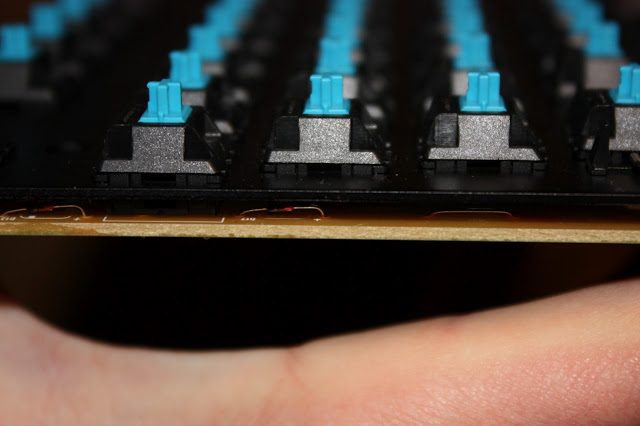

You probably pretty much know my opinion about Das after reading this post, but let me say a word of wisdom at the end.

Apart from that I cannot say any bad things about Das. Some grease should be applied to these wires during the manufacturing process. After I applied some lubricating grease to it the irritating voice gone away. I was more than surprised because everything else was so terrific about the keyboard. The left IC is a Genesys GL850G USB hub controller and the right baby is a Holtek HT82K95E USB Multimedia Keyboard Encoder 8-Bit MCU.Īfter using Das for some weeks I could hear some squeaky noise when pressing the space bar. The controller PCB is definitely not an ordinary one. Let me note that it doesn't implement true N-key rollover, only 10-key rollover, but it's hardly a limitation as most of us have 10 fingers. Most dome switch keyboards use foil, but we're not dealing with mediocre quality here.ĭas uses diodes to implement N-key rollover. The keys are attached to the PCB (but they sit on the aluminium panel shown above). Because of this shape, each row has to close a different angle with the base panel than the other rows. This shape is more optimal for typewriters than the much more common linear shape used by the rest of the keyboards (not counting the Model M and Unicomp keyboards). When seeing Das from its side it's easy to notice that the top of the keys form a slight U shape. Panel mounting also make Das more expensive, so think about what does this keyboard provide for its price before saying that it costs too much. Panel mounting is a more robust solution than PCB mounting. The switches are panel mounted, not PCB mounted. We have lots of those switches, this obviously does not make Das a cheap keyboard. I've measured the constant pressing force by placing some coins on different keycaps. Every key needs constant pressure, about 50g. I'd like to note that it's a misbelief of some people that different pressure sensitivity is required for various switches, namely that less force is needed to press a switch as the distance from the center gets longer. They are both extremely durable and extremely enjoyable to type on. You have to pressure the hooks from the sides with some handy tool to disassemble the front and the back parts.Īfter removing the keycaps (which is a pretty easy job) you can see the soul of Das, the Cherry MX tactile keyswitches. I think it's probably impossible to disassemble the keyboard without breaking some of these hooks, but you don't really have to worry because the screws alone will hold the front part and the back part pretty tightly so you'll be perfectly able to use your beloved Das Keyboard after assembling it. There are some hooks that hold together the front part and the back part of the keyboard. You also have to remove the upper rubber feet to access the screws, but you'll be able to easily glue them back later. You have to harm the central warranty label so say bye-bye to the guarantee if you proceed further. This is the back of the keyboard clearly showing where the screw holes are. My friend, Dömi and I did everything we could do to make reasonably good pictures but the lighting was less than optimal and we're pretty unexperienced at making such photos. But that's the topic of another post.įirst of all, I want to apologize for some of the crappy pictures. No, I don't mean DVORAK, but something that I could call QWERTY Compact that is very easy to learn.
#DAS KEYBOARD PROFESSIONAL S REMOVE SWITCHES PC#
Just to make things clear, I think that Das Keyboard is the best traditional PC keyboard ever created, but not the best keyboard that is possible to create because the standard PC layout requires too much travel distance for various keys and it's suboptimal from the typewriter's perspective. I felt the need to disassemble Das Keyboard and see what makes it tick. You can check out higher resolution photos in a separate Google+ album. Das Keyboard: Disassembly and Analysis Das Keyboard: Disassembly and Analysis


 0 kommentar(er)
0 kommentar(er)
